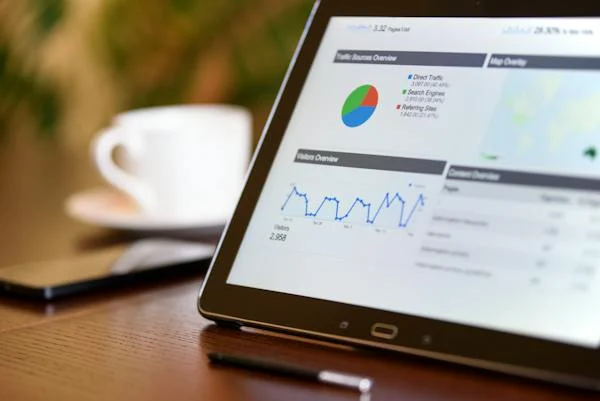Segmenting Your Email List
Importance of Email Segmentation
Email segmentation is the practice of grouping recipients based on specific criteria such as interests, behaviors, or demographics. This approach allows you to send targeted emails that meet the unique preferences and needs of different audience segments, avoiding the pitfalls of generic communications (Zapier). Implementing segmentation effectively can lead to significant increases in engagement and overall campaign performance.
Segmented email campaigns demonstrate enhanced performance metrics. For instance, segmented campaigns average a 46% higher open rate and account for 58% of all revenue generated from targeted and personalized emails (OptinMonster). By optimizing your communications through segmentation, you enhance your ability to connect with your audience on a more personal level.
Types of Email Segmentation
There are various methods for segmenting your email list, each with its benefits. The most common types include:
| Segmentation Method | Description |
|---|---|
| Demographic Segmentation | Involves categorizing recipients based on characteristics such as age, gender, location, job title, or organization type. This method aids in tailoring your emails to address specific challenges and goals of different demographic groups (Zapier). |
| Behavioral Segmentation | Focuses on analyzing how customers interact with your products. It considers factors such as purchase history, browsing behavior, and items clicked, allowing you to craft messages that resonate with their behaviors and interests (Zapier). |
| Interest-Based Segmentation | Groups recipients based on their stated preferences or interests. This can be gathered through surveys or past interactions with your emails and content. |
| Engagement Level Segmentation | Divides recipients based on their interaction with previous email campaigns. For example, you may separate highly engaged users from those who rarely open your emails, tailoring the content accordingly. |
Understanding these segmentation strategies is crucial for developing effective email marketing campaigns. By employing these methods, you can ensure that your messaging is relevant, increasing the likelihood of higher engagement rates and better overall performance in your marketing efforts.
Crafting Effective Email Campaigns
Creating effective email marketing campaigns is essential for engaging your audience and driving results. Here are key elements to focus on while crafting your email campaigns.
Clear Call-to-Action
One vital aspect of a successful marketing email is having a clear call-to-action (CTA). Ensure each email contains one primary CTA to remove any friction from users’ experience, guiding them towards the action you want them to take (New Breed Revenue). A well-defined CTA helps focus your audience’s attention and encourages higher conversion rates.
| CTA Example | Purpose |
|---|---|
| “Shop Now” | Directs recipients to your online store |
| “Sign Up” | Encourages newsletter or event sign-ups |
| “Learn More” | Provides additional information about products or services |
Personalization Techniques
Incorporating personalization techniques into your email campaigns enhances the user experience. Utilize personalization tokens, such as the recipient’s first name or tailored content based on their preferences. By doing this, you create a more intimate connection with your audience, making them feel valued. Studies show that personalized emails have higher open and engagement rates (New Breed Revenue).
Here are some tips for effective personalization:
- Use the recipient’s name in the subject line and greeting.
- Suggest products based on past purchases or browsing behavior.
- Segment your email list to deliver targeted content relevant to each group.
Intriguing Subject Lines
Crafting a compelling subject line is critical for capturing recipients’ interest and motivating them to open the email. A good subject line is concise, attention-grabbing, and enticing, encouraging recipients to read further. According to HubSpot, an effective subject line can significantly impact your email’s open rates.
To create impactful subject lines, consider the following strategies:
- Keep it brief, ideally under 50 characters.
- Use action-oriented language to prompt a response.
- Incorporate questions or intriguing statements to spark curiosity.
By focusing on these strategies, you will enhance the effectiveness of your email marketing campaigns. For more ideas on crafting impactful campaigns, explore our sections on marketing campaigns examples and successful marketing campaigns case studies.
Designing Impactful Emails
To ensure your emails stand out in crowded inboxes, effective design plays a pivotal role. This section covers the significance of visual content, responsive design, and the placement of essential information above the fold.
Visual Email Content
Engaging visuals are critical in email marketing. Studies show that visual emails are processed significantly faster—around 60,000 times quicker—by the human brain than plain text emails, which makes them more efficient in capturing recipients’ attention. Including compelling visuals, such as images and graphics, helps subscribers better understand the message being conveyed. Nearly two-thirds of professionals favor HTML and image-based emails over text-only formats, underlining the importance of visual engagement in your campaigns (Piktochart).
Using design templates can streamline the process, allowing for a consistent and professional look, while also optimizing user experience, particularly on mobile devices (Piktochart).
Responsive Design
Responsive design is essential for ensuring that your email campaigns render well on various devices, especially smartphones. As more users access emails on mobile devices, it is crucial that emails are designed to adapt to different screen sizes. This flexibility not only enhances user experience but also improves engagement rates.
Incorporating responsive design helps maintain your brand identity while ensuring that essential elements, such as images and calls-to-action, are easily accessible to your audience across different devices.
Above-the-Fold Content
Research indicates that internet users spend approximately 80% of their time reading above-the-fold content in emails. Placing key information, call-to-action buttons, and compelling visuals within the top 640 pixels of length and three inches of depth is vital for ensuring visibility and engagement. Focusing on this section can significantly influence your open rates and overall effectiveness of the email marketing campaign.
Strategically placing the most important aspects of your message above the fold will encourage recipients to engage with your content, leading to higher conversion rates and enhanced email campaign performance. For further resources on optimizing your email strategies, consider exploring our articles on email marketing campaign automation and measuring marketing campaign success.
Strategies for Email Engagement
Engaging your audience through effective email marketing campaigns is essential for driving conversions and building brand loyalty. Here are several strategies to enhance email engagement.
Using Emojis in Emails
Incorporating emojis into your emails can significantly boost open and click-through rates. When used strategically in subject lines or within the email body, emojis not only add a visual element but also make your emails more engaging and relatable. Research indicates that emails featuring emojis tend to garner better interaction, improving overall engagement with the content (HubSpot).
Here’s a breakdown of the impact of emojis on email engagement:
| Metric | Without Emojis | With Emojis |
|---|---|---|
| Open Rate (%) | 15% | 25% |
| Click-Through Rate (%) | 1.5% | 3% |
Email Design Templates
Utilizing design templates can streamline the email creation process and ensure a professional appearance. Templates allow for easy customization while maintaining a consistent brand image and optimizing user experience, particularly on mobile devices. Here are some benefits of using email design templates:
| Benefits of Design Templates |
|---|
| Saves time during the design process |
| Ensures branding consistency |
| Optimizes for mobile responsiveness |
| Facilitates A/B testing |
Using these templates can help you focus on content while ensuring that your emails are visually appealing.
Tailoring Content to Recipients
Personalizing email content can enhance the user experience and engagement levels. Techniques such as utilizing personalization tokens—like the recipient’s first name or other custom properties—can provide a tailored touch even in automated emails. Additionally, segmenting your email lists based on criteria such as demographics, purchase history, and engagement levels can lead to higher response rates. Here’s a summary of effective personalization strategies:
| Personalization Technique | Description |
|---|---|
| Name Personalization | Use recipient’s name in the subject line and content |
| Behavior-Based Content | Tailor offers based on past purchases or browsing behavior |
| Demographic Targeting | Adjust content based on geographic or age demographics |
By implementing these strategies, you can enhance engagement metrics and foster stronger relationships with your audience. For further information on measuring your campaign success, see our guide on measuring marketing campaign success.
Email Marketing Metrics
In the realm of effective email marketing campaigns, understanding key metrics is vital for gauging success and optimizing your strategies. The following metrics are crucial to track: email click-through rate, conversion rate, and bounce rate.
Email Click-Through Rate
The email click-through rate (CTR) measures the percentage of recipients who clicked on a link within your email. This metric is indicative of how engaging your content is and how well your calls-to-action resonate with your audience. A higher CTR signifies effective email design and messaging.
To calculate the CTR, use the formula:
[
\text{CTR} = \left( \frac{\text{Number of Clicks}}{\text{Total Emails Delivered}} \right) \times 100
]
| Example Metrics | Values |
|---|---|
| Emails Delivered | 1,000 |
| Clicks | 125 |
| Click-Through Rate (CTR) | 12.5% |
For more insights on marketing performance, feel free to explore our collection of marketing campaign performance metrics.
Conversion Rate
The conversion rate in email marketing tracks the percentage of recipients who completed a desired action after clicking a link in your email. This action could range from making a purchase to signing up for a newsletter. Monitoring this rate helps you understand the effectiveness of your campaigns in driving business goals.
The conversion rate can be calculated as follows:
[
\text{Conversion Rate} = \left( \frac{\text{Number of Conversions}}{\text{Total Clicks}} \right) \times 100
]
| Example Metrics | Values |
|---|---|
| Total Clicks | 125 |
| Conversions | 50 |
| Conversion Rate | 40% |
A robust conversion rate highlights the effectiveness of your email’s content and offers. To further enhance your email marketing efforts, consider exploring email marketing campaign automation.
Bounce Rate
The bounce rate measures the percentage of emails that could not be delivered to recipients’ inboxes. Bounces can be categorized as either “hard” bounces (permanent delivery failures due to invalid email addresses) or “soft” bounces (temporary issues, such as a full inbox).
Tracking the bounce rate is essential for maintaining a healthy email list and ensuring your messages reach potential customers.
The formula for determining bounce rate is:
[
\text{Bounce Rate} = \left( \frac{\text{Number of Bounces}}{\text{Total Emails Sent}} \right) \times 100
]
| Example Metrics | Values |
|---|---|
| Total Emails Sent | 1,000 |
| Bounces | 20 |
| Bounce Rate | 2% |
A high bounce rate can damage your sender reputation and affect deliverability. Monitoring and maintaining a clean email list can help mitigate this risk. For more details on measuring your marketing efforts, check out our guide on measuring marketing campaign success.
Understanding these email marketing metrics enables you to effectively assess and enhance your email campaigns. By monitoring the CTR, conversion rate, and bounce rate, you can make informed decisions that align with your overall marketing objectives.
Measurement and Analysis
To ensure the success of your email campaigns, implementing a robust measurement and analysis plan is essential. This involves tracking your campaign performance, identifying key performance indicators (KPIs), and interpreting the metrics collected, which ultimately informs your strategy for effective email marketing campaigns.
Tracking Email Performance
Establishing a systematic approach to track email performance is crucial. Begin by creating a measurement plan that encompasses the following steps:
- Choose Your Timing: Determine how frequently you will assess your email performance. Regular intervals allow you to capture trends and changes in engagement.
- Outline Goals and Objectives: Align your goals with the strategic objectives of your campaign, ensuring that they are specific and measurable.
- Analyze Results: Review what aspects of your campaigns are effective and where improvements are needed in terms of subscriber engagement.
Employing tools that automate performance tracking simplifies this process and provides you with real-time insights into campaign effectiveness.
Email Marketing KPIs
Key performance indicators (KPIs) serve as the benchmarks for evaluating the effectiveness of your email marketing efforts. Important KPIs to track include:
| KPI | Description |
|---|---|
| Open Rate | The percentage of recipients who open your email. It provides insight into how well your subject lines and sender information perform. |
| Click Rate | The percentage of recipients who click on links within your email. This indicates engagement levels and the effectiveness of your content. |
| Bounce Rate | The percentage of emails that were not delivered successfully. A high bounce rate can signal issues with your email list quality. |
Marketers must monitor these metrics over time to assess campaign performance and compare against industry benchmarks.
Interpreting Email Metrics
Transforming email metrics into actionable insights requires a comprehensive understanding of their implications. Key practices include:
- Identifying Trends: Analyze metrics such as open rates and click rates to observe patterns. For instance, if you notice higher engagement rates on mobile compared to desktops, you might prioritize mobile-friendly designs in future campaigns (Mailchimp).
- Evaluating Impact: Assess how your emails contribute to broader marketing objectives by examining how specific metrics tie back to your overall goals (Mailchimp).
- Continuous Improvement: Utilize insights gained to refine and optimize your email strategies and enhance overall subscriber engagement.
For further resources on marketing effectiveness, consider exploring marketing campaign performance metrics to support your data-driven decisions. By focusing on measurement and analysis, you can enhance the efficacy of your email campaigns and achieve your marketing objectives.
Successful Email Marketing Campaigns
Effective email marketing campaigns are crucial for achieving your business objectives. By focusing on key areas, personalizing your content, and implementing engagement strategies, you can enhance your email marketing outcomes significantly.
Key Objectives
Defining key objectives for your email marketing campaigns helps streamline your efforts and measure success. Objectives could include:
- Driving Sales: Email marketing can be an effective tool to boost sales by promoting products or services to targeted segments.
- Promoting New Products or Services: Use email to inform your audience about new offerings and encourage purchases.
- Engaging Customers: Regular communication fosters stronger relationships by keeping customers informed and engaged.
Outcomes of successful campaigns can be evaluated through various metrics, helping to adapt strategies and improve future campaigns. Email segmentation is essential, as it significantly enhances open rates and engagement, with segmented campaigns achieving 46% higher open rates.
Email Personalization
Personalizing your emails is one of the most effective tactics for improving engagement and conversion rates. Emails that are tailored to the individual are more likely to be opened and acted upon. Strategies for effective personalization include:
- Using the Recipient’s Name: Including the recipient’s name in the subject line or greeting can create a more personal touch.
- Segmenting Email Lists: Grouping recipients based on their past behavior, demographics, or interests allows for more relevant content delivery. This practice not only increases open rates but also improves overall campaign performance.
- Targeted Offers: Craft promotions based on the recipient’s past purchases or preferences, making the email more appealing.
Personalized emails foster loyalty and enhance customer relationships, making them crucial tools for a successful email marketing strategy.
Email Engagement Strategies
To maximize engagement in your email campaigns, consider implementing the following strategies:
- Intriguing Subject Lines: Craft compelling and brief subject lines to capture the recipient’s attention. An effective subject line significantly influences open rates (HubSpot).
- Clear Call-to-Action (CTA): Include a clear and actionable CTA that directs the recipient to the desired action, whether it is to buy a product, read a blog post, or sign up for a webinar.
- Visual Appeal: Use visual elements sparingly to enhance your messages without overwhelming the reader. Well-designed emails can improve engagement rates while maintaining focus on the content.
Effective engagement strategies are essential to not only ensuring that your emails are opened but also that recipients take the action you desire. For more examples of marketing campaign success, explore our resources on marketing campaigns examples and successful marketing campaigns case studies.
Email Campaign Best Practices
Implementing effective email marketing campaigns requires attention to several best practices. This includes building contact lists, gleaning actionable insights, and crafting effective email copy.
Building Contact Lists
A robust email list is foundational to any successful email marketing campaign. Focus on segmenting your email lists based on various criteria, such as demographics, past purchase behavior, and engagement levels. This approach enhances your ability to create targeted segments that positively respond to your campaigns, leading to higher engagement rates and improved conversions (OptinMonster).
Consider the following strategies for building a quality email list:
| Strategy | Description |
|---|---|
| Opt-in Forms | Utilize sign-up forms on your website and social media to collect emails. |
| Lead Magnets | Offer incentives such as discounts, ebooks, or exclusive access in exchange for email addresses. |
| Events and Webinars | Collect email addresses during events or webinars, ensuring engagement with a targeted audience. |
Implementing these strategies helps ensure that your email list comprises individuals genuinely interested in your content.
Actionable Insights
In order to refine your email marketing efforts, creating a measurement plan from the outset is critical. You should establish metrics and KPIs that align with your campaign objectives and regularly analyze performance. This ongoing evaluation allows you to discern what is effective and identify areas for improvement.
Consider these key metrics to track:
| Metric | Definition |
|---|---|
| Open Rate | The percentage of recipients who open your email. It indicates the effectiveness of your subject lines. |
| Click-Through Rate (CTR) | The percentage of recipients who click on links within your email, reflecting engagement and interest. |
| Conversion Rate | The percentage of recipients who complete a desired action after clicking through, essential for measuring campaign success. |
By monitoring these insights, you can make informed decisions to optimize future campaigns and enhance subscriber engagement.
Effective Email Copy
Crafting effective email copy is essential in capturing your audience’s attention. Start with a strong subject line, as it plays a crucial role in encouraging email opens. Ensure that your email content is clear, concise, and directly addresses the needs and interests of your recipients. Highlight your call-to-action prominently, guiding recipients towards the desired action.
To enhance your email copy, consider the following tips:
- Personalize content to resonate with the specific segments of your audience.
- Utilize storytelling to create emotional connections and engage readers.
- Maintain a formal yet approachable tone that reflects your brand’s identity and values.
For more insights on effective strategies, explore our resources on digital marketing campaign strategies and measuring marketing campaign success. Engaging with your audience through thoughtful and strategic email communication can significantly impact the overall effectiveness of your email marketing campaigns.




















